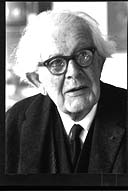A web site full of stuff that should be useful
| AS Psychology |
| Core Studies |
| Links |
| Course Content |
| Exam Questions |
| Psychological Investigation |
| Themes and Perspectives |
| Glossary |
| About this site |
|
|
![]()
The Samuel and Bryant Page
|
Below is a very brief summary of the Samuel and Bryant study. You will need to use the more detailed summary here to revise for the exam. You can also find all of the past exam questions on Samuel and Bryant's study here.
|
|
|
In one of his conservation tests Piaget demonstrated that if you show a child two beakers of water, one of which is tall and thin, the other short and fat, and ask the child which beaker contains the most water, most children under the age of 7 will say 'the tall one', even though they both contain the same amount of water. Piaget argued that this is because the child has not developed the ability to conserve volume. Conservation of volume is the ability to realise that something may have the same volume, even though it is a different shape. The aim of Samuel and Bryant’s study was to challenge Piaget's findings by altering the method used by Piaget. The participants were 252 boys and girls between the ages of 5 and 8.5. They children were divided into
four age groups of 63 children, whose mean ages were; 5 years 3 months Each group was divided into 3
subgroups which underwent a different condition. The three conditions were:
1 Standard: This is
the traditional two question conservation task as carried out by
Piaget. The child is asked about the size of the object before and
after the shape was changed.
2 One judgement:
This is a conservation task like the original but this time with
only one question asked, the post transformation question. That is,
the child is only asked once about the size of the object and this
is after the transformation has taken place.
3 Fixed array control:
In this condition the child saw no transformation being made and
only saw the post-transformation display. That is, the child just
saw the objects after they had been changed and not before. The
purpose of this third condition was to check that children who
answered the post-transformation question correctly in the other two
conditions did so by bringing over information from the
pre-transformation display. Three different types of material were used for the conservation tasks - mass (Playdoh), number (counters) and volume (liquid). (a) Mass: In this task
children in condition 1 and 2 were first shown two equal and
identical Playdoh cylinder shapes. The transformation was to squash
one of these shapes into a sausage. After this, the children were
asked to compare the cylinder and the sausage. The children in
condition 3 also made this comparison without seeing the first
display or the transformation. (b) Number: In this task
children in condition 1 and 2 were shown two rows of counters of
equal length arranged side by side in one to one correspondence.
The rows contained six counters. Then one row was spread out or
bunched up. The condition 3 children saw only the
post-transformation displays. (c) Volume: In this task
children in conditions 1 and 2 were first shown two identical
glasses with the same amounts of liquid. Then the liquid from one
glass was poured into a narrower one or a shallow wider one. The
condition 3 children saw only the post-transformation displays. The researchers recorded the number of errors children made in the tests. There were three main findings. 1. As predicted by Samuel and
Bryant, children found the one judgement task significantly easier
(they made less errors) than the standard conservation task and the
fixed-array control. This was true of all three types of material. Samuel and Bryant also found that; 2. There was a significant difference between the age groups, with older groups doing consistently better than the younger. 3. The children made fewer
errors on the number task compared with the other two tasks Samuel and Bryant gave an explanation for why children make fewer errors on the one judgement conservation task compared to the standard conservation task. They believe that in the standard conservation task, the pre-transformation question is unwittingly forcing the child to give the wrong answer by asking the same question twice (they call this the extraneous reason hypothesis). For example if the child is asked
a question about the volume of beakers and then sees the
experimenter pour the liquid from one beaker into another, the child
might believe that the experimenter must be doing it for a reason
and therefore want the child to give a different answer.
|
|
